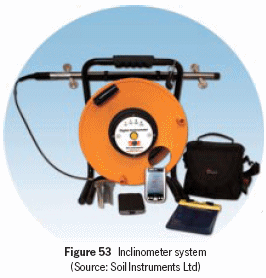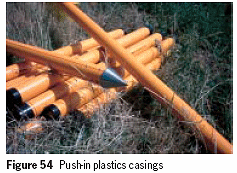Buy the Book
Published By Lankelma
Lankelma is the foremost contractor for onshore in-situ soil testing in the UK. An acknowledged
specialist in CPT, Lankelma also offers a worldwide consultancy and training service.
A.P. van den Berg develops, designs and manufactures geotechnical and environmental soil
investigation equipment for onshore and offshore applications. Specialists in CPT systems and equipment.
Gardline
Gardline Geosciences offers worldwide marine geotechnics, in-house consutancy and services with marine
investigations ranging from nearshore to full ocean depth (down to 3000m).
About the Author
Hans Brouwer studied civil engineering at Delft University in The Netherlands. He has
worked as a part-time lecturer at Amsterdam Polytechnic and was senior partner in a structural
engineering consultancy. He has written a standard textbook in Dutch about the design of
building foundations. He now lives in England where he writes technical textbooks in
English, hopefully to reach a bigger readership.
Quick Links:
Chapter 6
Instrumentation
Inclinometer system
| |
INCLINOMETER SYSTEM 6.4 | |
| |
Inclinometer systems are used to monitor deformation. The system includes an inclinometer casing, an inclinometer probe and a control cable, and an inclinometer readout unit.
The plastic inclinometer casing, as shown in Figure 53, is typically installed in a near-vertical borehole that passes through a zone of suspected movement. The bottom of the casing is anchored in stable ground. The inclinometer probe is used to survey the casing and establish its initial profile. The inclinometer probe consists of two servo accelerometers housed in a stainless steel body, a connector for the control cable, and two pivoting wheel assemblies.
|
 |
| | Applications
Inclinometer systems are used for the
measurement of lateral earth
movements which can occur in the following: - landslides
- unstable slopes
- dams
- embankments
- landfills.
They are also used to measure deflections
in the walls of excavations, shafts, tunnels
and in caissons, piles and sheet piling. | |  |
| | Installation
Casings (Figure 54) can be installed either in a grouted borehole or, where ground conditions permit, pushed into position using CPT equipment. The annular space
between the casing and the borehole is backfilled to the surface with a bentonite cement grout specifically designed to match the surrounding soil conditions. Where the push-in method is used there is usually no need to backfill around the casing with bentonite cement grout.
| |
| | The inclinometer casing is installed so that one set of grooves is aligned with the expected direction of movement and the base is securely fixed into position well beyond the expected zone of movement.
Operation
Ground movement causes the casing to move away from its initial position. The rate, depth, and magnitude of this movement is calculated by comparing data from the initial readings to data from subsequent readings.
In a standard inclinometer survey, the probe is drawn from the bottom to the top of the casing twice. The inclinometer probe employs two force balanced servo-accelerometers to measure tilt. One accelerometer measures tilt in the plane of the inclinometer wheels while the other accelerometer measures tilt in the plane that is
perpendicular to the wheels.
|
| | |
<< Previous PageNext Page >>


